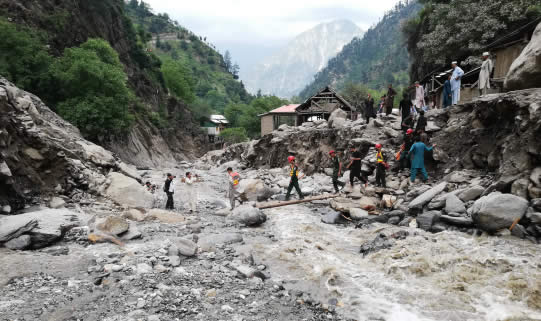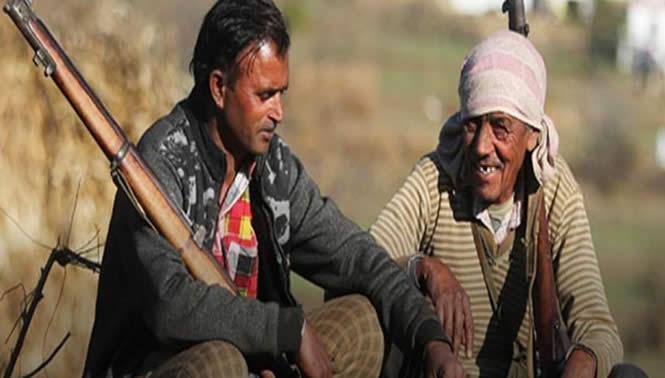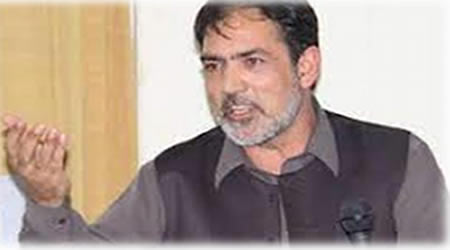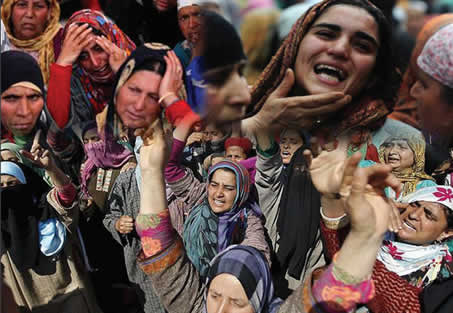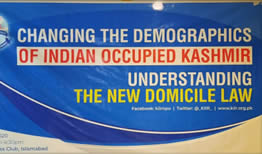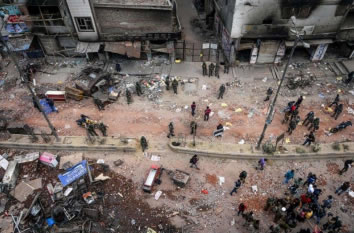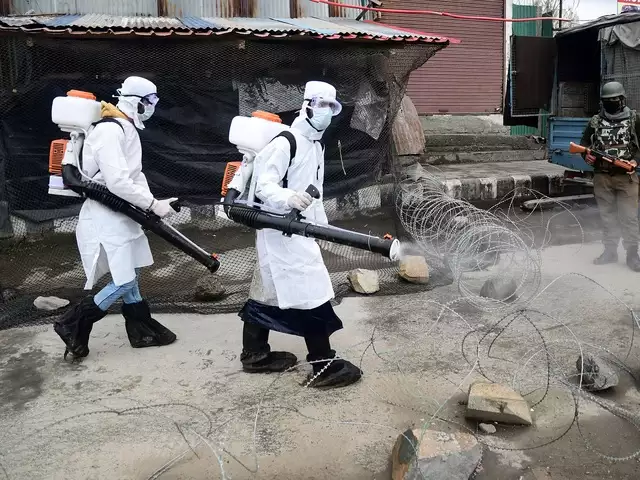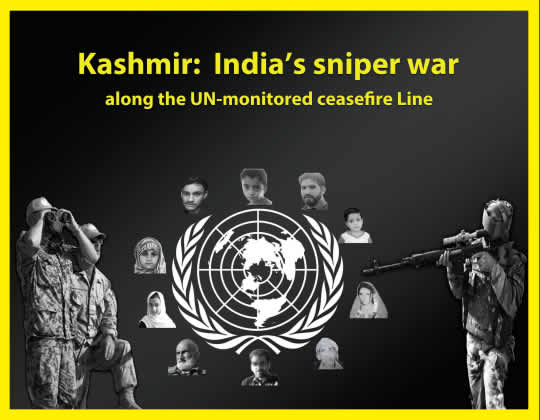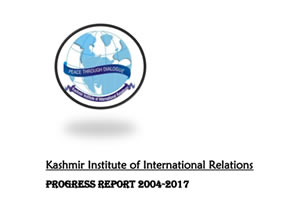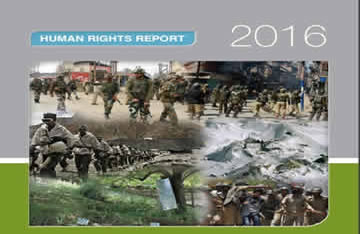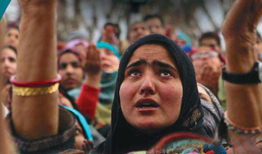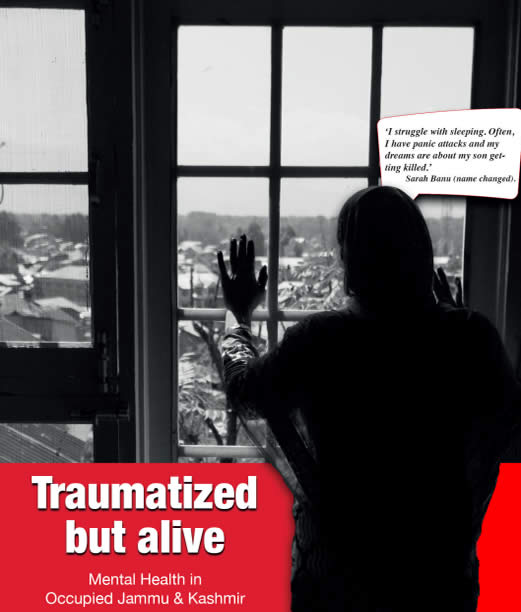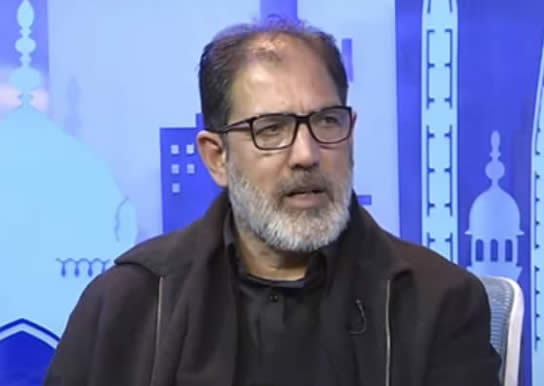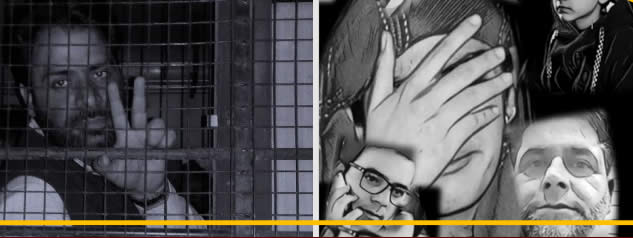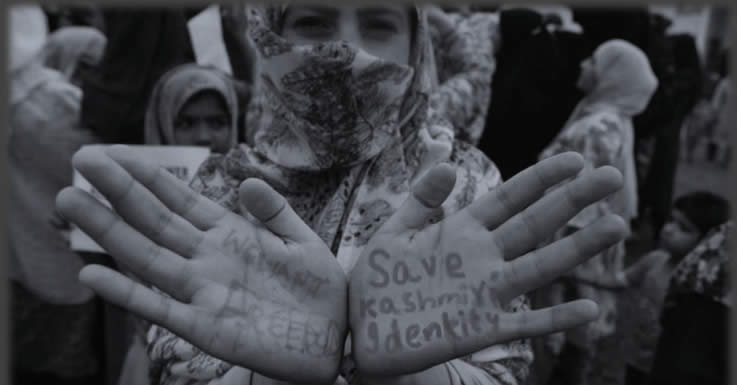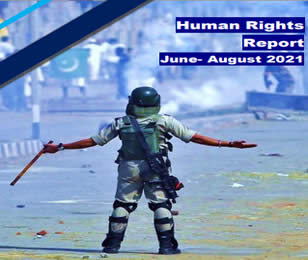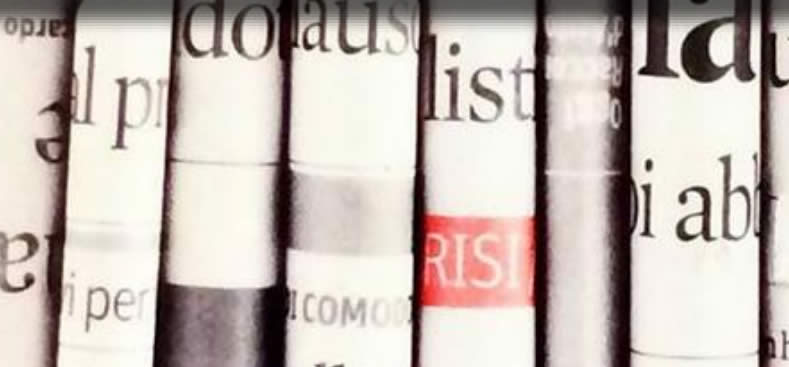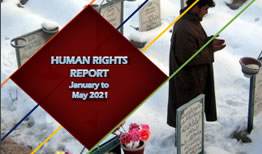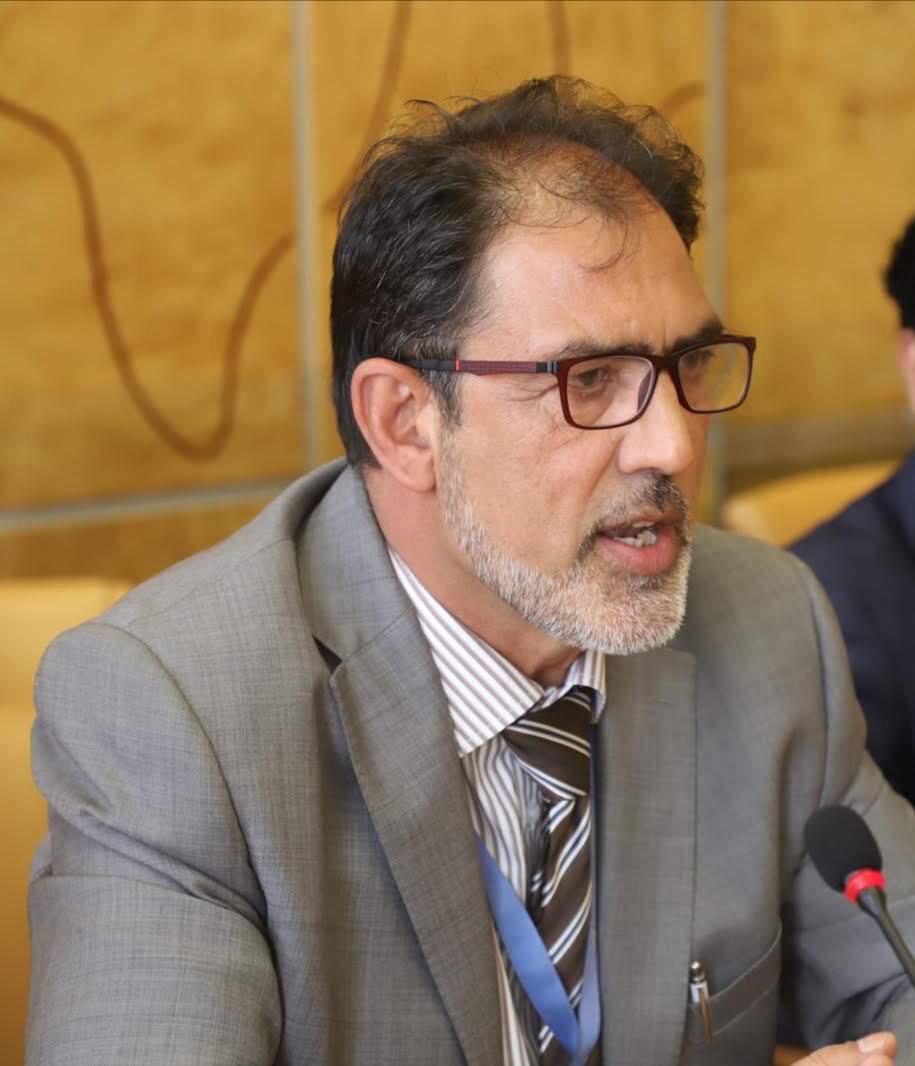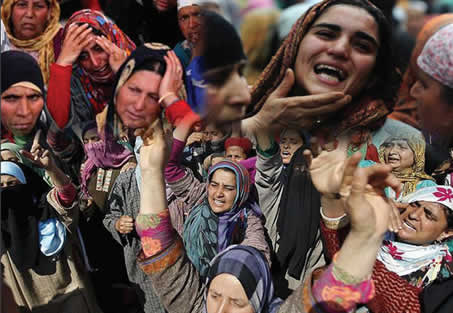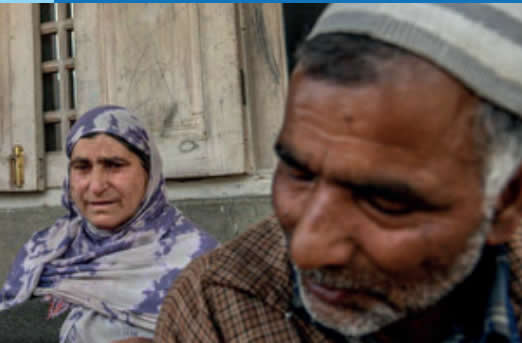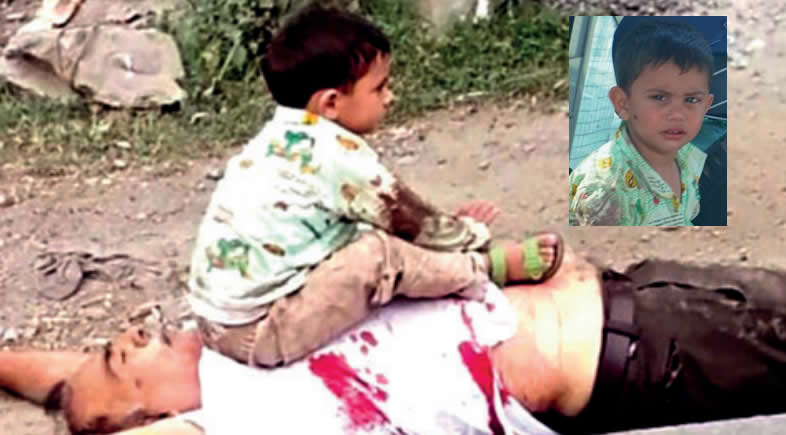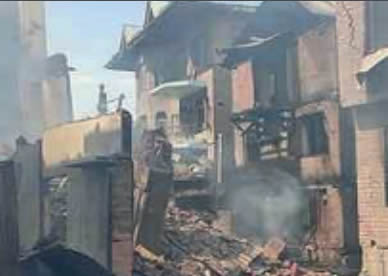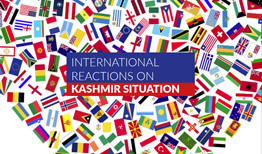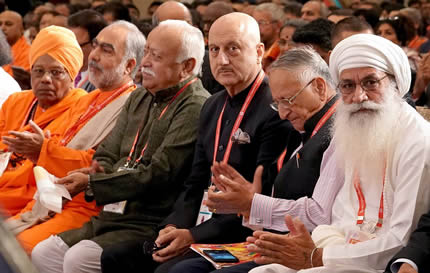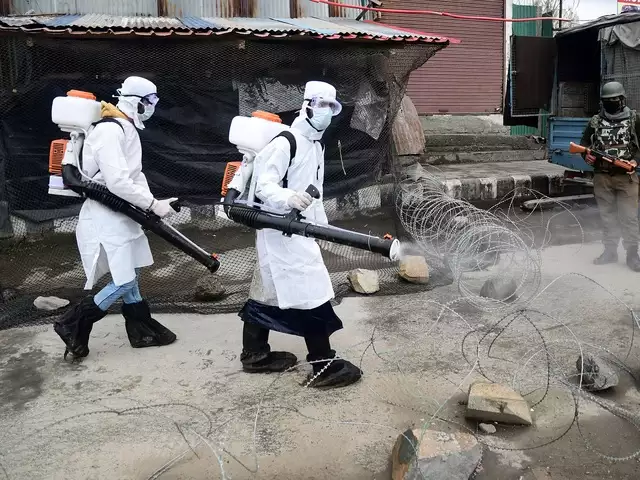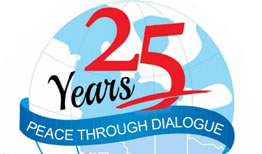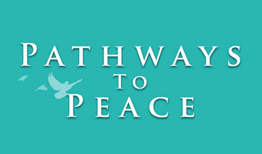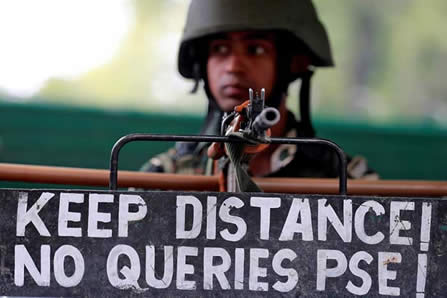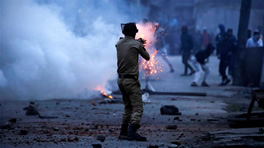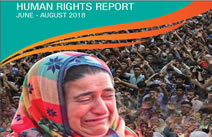


INTRODUCTION
Indian government’s contentious decision to abrogate Articles 370 and 35A on August 5, 2019 stands as a watershed moment in Kashmir’s recent history. On this day, the BJP led Government, with one sweeping move, dismantled the region’s constitutionally guaranteed autonomy, revoked its special status, and downgraded it to a union territory without the formal consent of its people. Needless to say that the decision, enforced under an unprecedented security and communications lockdown, was projected by New Delhi as panacea to the problems surrounding Kashmir and a gateway to development. For indigenous Kashmiris, it meant not integration but the erasure of their distinct identity, and a rupture in the political and legal framework that defined the relationship between New Delhi and Jammu & Kashmir — a UN-recognised disputed territory still awaiting final settlement under UNSC resolutions.
India has sought to project an ‘all is well’ image of Kashmir; yet six years on, the post- abrogation reality is one of shrinking civic space, heightened surveillance, and the steady erosion of democratic institutions. Years of direct, iron-fisted rule have deepened political disempowerment, while ongoing assaults on Kashmiris’ history, culture, identity, and religion — coupled with economic disruption — have further marginalized indigenous communities. In today’s Kashmir, every traditional form of expression —be it political, artistic, or religious — is under the constant threat of criminalisation and coercion This appraisal seeks to unpack the post-abrogation landscape, critically examining how governance structures, economic disruptions, and state-led narratives have contributed to a deepening sense of disempowerment in the region. Central to this analysis is the erosion of civic space—manifest in the suppression of dissent, media clampdowns, and limitations on cultural and religious expression.
CONTEXTUALISING THE ABROGATION
The so-called ‘Jammu and Kashmir Reorganisation Act’ that led to revocations of Articles 370 and 35A was not a mere constitutional reform — it was an open assault on the very identity of Kashmiris and on their UN-mandated right to self-determination. Originally enshrined as a mechanism to formalize Jammu and Kashmir’s unique relationship with the Indian Union, the Article 370 was never meant to be a temporary provision in the conventional sense. It embodied the terms of the relationship between Jammu and Kashmir and the Indian state, as agreed upon in the 1949 when it was incorporated into the Indian Constitution, and stood as an acknowledgment of the region’s distinct political and historical context.
No referendum, no consultation, no legislative mandate — the unilateral decision was simply an authoritarian dictate, imposed hastily without consent, dialogue, or parliamentary approval from the people of Kashmir. It was a reckless display of authoritarianism—devoid of any moral or legal justification—and a complete betrayal of both the spirit and the procedure that had long governed the relationship between Jammu and Kashmir and the Indian state. The Jammu and Kashmir Constituent Assembly, which was dissolved in 1957, was never meant to be substituted by the Governor (later Lieutenant Governor), yet it was through this very conduit (route) that the constitutional change was pushed through.
Legal scholar and historian A. G. Noorani (Late) described the move as a constitutional fraud. His statement underscores the magnitude of the procedural bypass: what was projected as a constitutional measure was, in reality, an imposition devoid of democratic legitimacy. The government justified its action on the grounds of mainstreamisation and the removal of legal obstacles in the way of development in the region. Yet, none of these claims address the fundamental issue of popular will. This unilateralism signaled more than a legal change—it marked a dangerous shift in how the Indian state perceived and exercised power in Kashmir.
SHRINKING CIVIC SPACE
The August 5th move, justified in the name of national integration and development, has instead plunged Kashmir into a deepening crisis — marked by repression, fear, and the systematic dismantling of democratic institutions. What was sold to the public as progress has, in reality, crippled the region’s entire political system and eroded the very institutions essential to a sustainable democracy. In the past six years, one of the most visible and unsettling shifts in the IoK has been the systematic erosion of civic space. For example: the core instruments of democracy — including freedom of speech, assembly, association, and political participation — have been steadily undermined through a calculated mix of legal repression, mass surveillance, and bureaucratic control, weakening the grip and authority of local stakeholders.
Civic Liberties Under Siege
Since the revocation, civil liberties in Jammu and Kashmir have been severely curtailed. Fundamental rights — including freedom of expression, assembly, and movement — have been systematically suppressed through administrative detentions and blanket bans on public gatherings. According to Freedom House, Kashmir’s civil liberties ranking remains among the lowest in the region. Its overall freedom status declined from “partly free” to “not free” in the 2020 Freedom in the World report, published by the Washington-based watchdog advocating democracy and human rights. The blanket use of draconian laws such as the Armed Forces (Special Powers) Act (AFSPA) and the Public Safety Act (PSA) has pushed civil society to the margins. These laws grant sweeping powers of search, arrest, and prolonged detention without trial, while shielding security forces from accountability. Their frequent and arbitrary application has fostered an environment of fear and impunity, where dissent is readily criminalized.
Particularly troubling is the Unlawful Activities (Prevention) Act (UAPA), which was fully extended to Jammu and Kashmir after the abrogation of Article 370. It has been increasingly weaponised against dissenters, journalists, and even social media users, further chilling public discourse. As a result, human rights defenders, journalists, and civic organizations now function under constant surveillance and the looming threat of detention, severely limiting their ability to question authority or advocate for democratic rights. In effect, the very instruments of law — meant to safeguard citizens — have been
Organisations banned under UAPA
Jammat e Islami Jammu and Kashmir
Jammu Kashmir Liberation Front
Democratic Freedom Party
Muslim League
Peoples League
National Front
Muslim Conference
Tehreek-e-Hurriyat
Peoples Freedom League turned into tools of repression, accelerating the systematic erosion of civic space in Indian-occupied Jammu & Kashmir.
1. Ban on public gatherings
While civic space remains acutely constricted, public gatherings and peaceful protests, once integral to Kashmir’s political culture, have either been banned outright or placed under heavy policing. A semblance of political normalcy is projected through administrative routines and tightly managed public events, the deeper reality is one of sustained repression — a civic environment governed by surveillance, fear, and the criminalisation of dissent. Although many pro-India political leaders — mainly from parties that contest elections under the Indian Constitution and have long collaborated with New Delhi — have been released and allowed limited activity, the same does not apply to leaders who have consistently challenged India’s position on Kashmir. Those advocating for a peaceful settlement of the dispute in line with UN Security Council resolutions remain incarcerated, often without formal charges or transparent legal process. Among them are several prominent figures who shaped the discourse on self-determination, peace, and accountability:
2. Judicial Repression
Equally alarming is the continued incarceration and judicial harassment of human rights defenders who have dedicated their lives to documenting abuses in the region. Khurram Parvez, programme coordinator of the Jammu Kashmir Coalition of Civil Society (JKCCS), has been detained since 2021 under UAPA. His arrest sent a chilling message across civil society, given his internationally recognised work on enforced disappearances, torture, and state violence. Other JKCCS members, including Irfan Mehraj, have also been arrested, further dismantling one of the few credible human rights monitoring platforms in the region. This selective repression reveals a disturbing pattern: while co-optable political actors are cautiously rehabilitated into a tightly managed political framework, voices that challenge the legitimacy of the Indian state’s actions in Kashmir are systematically silenced and victimised.
3. Press freedom and journalists under attack
Media practitioners in Kashmir continue to work under constant intimidation. Social media is heavily surveilled, homes are raided, and dissenters are routinely summoned for questioning. Even symbolic acts — holding a protest, writing an opinion piece, or sharing archival material — can invite police action under sedition laws or terrorism charges. The impact of these measures is not merely administrative but deeply psychological. A pervasive atmosphere of fear and surveillance discourages civic participation and enforces silence rather than consent. The space for debate, dialogue, and democratic dissent has been replaced by a regime of control — where even the act of remembering is treated as subversive. What has unfolded in the post-abrogation period is not the restoration of order, but the criminalisation of civic life itself. The demand for dignity, autonomy, and rights— long at the heart of Kashmir’s political struggle—is now branded as sedition or separatism. The framing dissent as disloyalty has become central to New Delhi’s approach to Kashmir.
4. Legal tools used to suppress dissent
Since the abrogation of Article 370 in August 2019, the use of sedition laws1 like the PSA and UAPA has increased to a great extent. NCRB (National Crime Record Bureau) data shows a 12% surge, with nearly 37% of all UAPA cases in India between 2020 and 2022 coming from Kashmir — a region that makes up barely 1% of the country’s population. With vague provisions and no real judicial oversight, they enable arbitrary detentions, silence the press, and criminalise dissent. What New Delhi calls ‘law and order’ is nothing less than the criminalizion of everyday life in Kashmir The surge in their application 2 since 2019, combined with other measures like surveillance and passport revocations, has significantly curtailed fundamental rights, drawing condemnation from human rights organizations and raising concerns about democratic backsliding in the region.
5. Suppression of dissent through NIA & ED
Alongside the use of UAPA and PSA, central investigative and enforcement agencies— including the National Investigation Agency3 (NIA) and the Enforcement Directorate (ED)—have been increasingly deployed across Jammu and Kashmir. These agencies have a worst track record of leveling fake allegations and waging vilification campaigns against Kashmiri resistance leaders to malign them and link them with subversive activities just to prolong their detentions. They frequently raid the homes and offices of journalists, political leaders, lawyers, and civil society members, often citing “terror funding” or “money laundering” as justification. Critics contend that these actions form a deliberate pattern aimed at intimidating, harassing, and financially exhausting those perceived as critical of government policies. Combined with draconian legal provisions, this enforcement-driven approach has severely constricted civic space, stifling nearly every voice of dissent in the region.
6. Sanctions on right to freedom of speech & expression
As of 2025, severe restrictions on peaceful assembly, speech, and expression remain firmly in place. The frequent application of draconian laws, combined with NIA and ED actions, has further constricted civic space and stifled dissent across the region. This lethal mix of colonial-era legal instruments and aggressive agency crackdowns has created a pervasive climate of fear, discouraging student activism, peaceful protests, and independent journalism. Illegal detentions and intimidation of journalists continue unabated, with no meaningful policy changes to lift these restrictions. Internet shutdowns, travel bans, and restrictive media policies further compound the situation, creating a repressive environment that undermines fundamental rights. This broader framework of suppression remains firmly in place, drawing sustained criticism from human rights organizations. For instance—the Amnesty International noted that the government’s actions aim to “stifle dissent” and control information flow.
DELETING ARCHIVES: A DELIBERATE ATTEMPT TO ERASE KASHMIR’S COLLECTIVE MEMORY
There is a growing perception that the Indian government is systematically erasing the region’s history by deleting archives and removing records of human rights violations in Kashmir—a move that points to efforts to suppress or control narratives on human rights in Kashmir. While the full extent and intent of these actions require rigorous, independent analysis, they appear to constitute a calculated attempt to erase history and silence collective memory.
Evidence of Content Removal and Censorship
1. Disappearance of News Archives
Multiple reports4 indicate that digital archives of local Kashmiri newspapers, such as Kashmir Times, Greater Kashmir, Rising Kashmir, and Kashmir Reader, and other Kashmir based newspapers including web portals have seen significant content vanish, particularly articles critical of the Indian government or documenting human rights abuses. For instance, journalists like Hilal Mir and Junai d Kathju have reported that their work, especially pre-2019 stories, has been removed from these publications’ websites. These reports often detailed extrajudicial killings, enforced disappearances, and other violations attributed to Indian forces deployed in the region. Some editors and administrators have attributed these deletions to "technical issues, but journalists suspect deliberate censorship due to pressure from authorities. For example, at Rising Kashmir, staff were told by editor-in-chief Hafiz Ayaz Gani that the website was being updated, yet missing articles were never restored. The timing of these deletions often coincides with the 2019 revocation of Article 370, which stripped Jammu and Kashmir of its special autonomy, suggesting a possible link to increased government control over information.
2. Targeted Deletion
The Kashmir Times, a prominent and oldest newspaper of Kashmir, reported that its digital archives6 from 2011 to 2016 were deleted, with editors Anuradha Bhasin and Prabodh Jamwal suspecting the role of state actors behind the targeted deletion of the content, viewing the content as counter-narrative. There are reports that many publishers have turned to foreign-based servers to safeguard their archives, but reliance on these servers without robust backup systems leaves them vulnerable. Additionally, the absence of government advertisements since 2008 has severely constrained their ability to maintain secure digital infrastructure. Similarly, Kashmir Lit7, a webzine dedicated to Kashmiri art and literature, reported being hacked, with specific articles removed and the entire site taken down temporarily. There is a substantial evidence that such incidents of targeting content critical of the Indian government, particularly on human rights and the Kashmiri struggle for self-determination, is deliberate, systematic and calculated.
3. Systematic assaults on journalists
Between 2019 and 2022, Amnesty International documented at least 60 cases 8 of interrogations, arbitrary arrests, and surveillance targeting journalists and activists. Draconian laws such as the Unlawful Activities (Prevention) Act (UAPA) and Public Safety Act (PSA) have been routinely used to detain individuals without trial, often in retaliation for their reporting or activism. The 2022 closure of the Kashmir Press Club, along with restrictive policies like the 2020 Revised Media Policy and the 2021 Film Policy, has further curtailed press freedom, allowing the government to control the flow of information and punish critical reporting.
4. Controlling the Narrative
The Indian government has faced widespread criticism for manufacturing a narrative of “normalcy” in Kashmir through tight media restrictions, controlled access for international observers, and coordinated propaganda campaigns. Human Rights Watch and Amnesty International have documented systematic restrictions on foreign media, alongside the use of digital platforms to amplify government-friendly narratives while suppressing reports of human rights abuses.
5. Motives behind the Erasure of History
The selective removal of articles critical of the government, and targeting of specific content9—such as reports on extrajudicial killings, mass graves, and torture—suggests an intent to obscure historical records that could be used by researchers, human rights groups, or international bodies like the UN.
6. Limitations
While the pattern of deletions is well-documented, direct evidence linking the Indian government to these actions remains a significant challenge since Indian government has blocked all ways of an independent investigations into human rights violations taking place in the region, particularly since the revocation of Article 370 in August 2019. This includes:
A. Denying access to international journalists
B. Denying access to UN observers, and human rights organizations like Amnesty
International, which was forced to halt operations in India in 2020 due to government pressure. It is worth to recall here that the OHCHR’s 2018 and 2019 reports on Kashmir explicitly called for establishing a Commission of Inquiry to investigate allegations of human rights abuses, including extrajudicial killings, enforced disappearances, and torture. These reports documented over tens of thousands of civilian deaths, alongside widespread use of pellet guns and draconian laws like the Public Safety Act (PSA). However, India dismissed these reports as “fallacious” and “motivated,” refusing to cooperate or allow UN access to Indian-administered Kashmir.
7. Diminishing Domestic Oversight
The National Human Rights Commission (NHRC) has been criticized for its lack of independence, operating under government oversight and failing to pursue robust investigations into Kashmir. Courts, including the Supreme Court of India, have often deferred to the government on national security grounds, delaying or dismissing petitions related to Kashmir’s human rights situation.
8. Information Control Mechanisms
Frequent internet shutdowns and the blanket application of repressive laws have severely restricted the ability of journalists and rights activists to document and share evidence of abuses.
9. Lack of Intent for Independent Inquiry
India has demonstrated no willingness to establish a Commission of Inquiry or permit independent external investigations into the situation in Kashmir. The government continues to frame the issue as an “internal matter,” portraying its actions as necessary to counter “militancy and safeguard national security”. This reckless attitude and persistent denial of ground realities is reinforced by the absence of sustained international pressure, as major powers continue to prioritize strategic and economic ties with India over meaningful human rights advocacy.
10. Implications and Challenges Obscuring Accountability
The absence of independent investigations, combined with the deletion of archives and the suppression of journalists, poses a major barrier to accountability in Kashmir. Without access to primary sources or official records, documenting the scale of abuses—estimated by various human rights organizations and civil society groups, including the Jammu and Kashmir Coalition of Civil Society (JKCCS), since the 1990s—relies largely on fragmented testimonies and recovered archives. Unfortunately, realpolitik in global affairs has severely limited the prospects of holding India accountable, leaving NGOs and diaspora groups as the primary advocates for justice. While the pattern of deletions and harassment strongly suggests a deliberate effort to obscure human rights abuses, the absence of concrete proof—combined with India’s rejection of international scrutiny—continues to obstruct accountability.
ROLE OF TECHNOLOGY IN MONITORING DISSENT IN KASHMIR
The Indian government’s use of surveillance technologies, including Israeli-made spyware, to monitor dissent in Kashmir is a well-documented concern, particularly in the context of suppressing human rights activism and journalism. The deployment of these tools, combined with efforts to influence social media platforms, has significantly impacted freedom of expression and dissent in the region.
1. Use of Israeli Spyware (Pegasus and Others)
Pegasus Spyware: Developed by Israel’s NSO Group, Pegasus is a sophisticated spyware capable of infiltrating smartphones to access messages, emails, photos, calls, location data, and even activating cameras and microphones without user consent. In 2021, the Pegasus Project10, led by Amnesty International and Forbidden Stories, revealed that over 1,000 Indian phone numbers, including those of Kashmiri journalists, activists, and opposition leaders, were potential targets of Pegasus surveillance Specific Cases in Kashmir: While specific Kashmiri targets were not always named in public reports, the broader pattern includes journalists and human rights defenders critical of the Indian government’s actions in Kashmir. For instance, Amnesty International’s 2023 investigation confirmed Pegasus was used to target Indian journalists, with implications for Kashmir given the region’s history of media Other Tools: In addition to
Pegasus, companies like Cognyte and Septier have supplied surveillance technologies to India. These tools, integrated into subsea cable landing stations and data centers, enable the interception of voice, messaging, web activity, and email correspondence. In Kashmir, such technologies are reportedly used to monitor dissent, particularly among activists and journalists documenting human rights abuses.
2. Advanced Surveillance Technologies
India has deployed Israeli-origin technologies, including facial recognition systems, smart fences, and drone monitoring, in Jammu and Kashmir. These tools, some reportedly tested in Gaza, form what human rights observers call an “occupation technology loop,” used to track and control populations in contested regions. These surveillance systems in Kashmir leverage AI to analyze intercepted data, enabling targeted monitoring of individuals. For example, Septier’s technology, used by telecom providers like Reliance Jio, extracts and analyzes communications data, raising concernsabout mass surveillance without adequate oversight.
3. Government Pressure on Social Media Platforms
The Indian government has frequently pressured social media companies like X, Meta, facebook and WhatsApp to remove content deemed critical of its policies in Kashmir. For example, in 2020, X was asked to block accounts linked to Kashmiri activists11, citing national security concerns. Non-compliance often results in threats of legal action or operational restrictions under India’s Information Technology Act, 2000, and its 2021 Intermediary Guidelines.
4. Data Access Demands
The government has sought access to user data from platforms like WhatsApp, particularly for encrypted communications, to monitor dissent in Kashmir. While platforms have resisted to varying degrees (e.g., WhatsApp’s 2019 lawsuit against NSO Group for exploiting its platform), they often comply with government requests to avoid bans or penalties.
5. Legislative Control
The Digital Personal Data Protection Act (DPDPA), passed in 2023, grants the government broad powers to bypass privacy safeguards for “national security,” raising concerns about unchecked surveillance. Critics argue the Act’s ambiguous language enables arbitrary data demands from social media platforms. The Indian government’s relationship with social media platforms is better described as coercive. For instance, in 2021, India threatened to jail employees of X and Meta for non-compliance with content takedown requests related to Kashmir and other sensitive issues. This suggests the government holds significant leverage over platforms, rather than deferring to them. -Platforms like X have faced criticism for complying with government orders to suspend accounts of Kashmiri journalists and activists, indicating alignment under pressure rather than mutual cooperation. However, there’s no direct evidence that social media companies actively collaborate with the government to target dissent beyond legal compliance.
However, it is quite upsetting that neither the Indian government nor social media companies fully disclose the extent of content removals or data-sharing agreements, making it difficult to assess the degree of collaboration. The government’s use of Israeli spyware, such as Pegasus, and other surveillance
technologies like facial recognition and drones plays a significant role in monitoring and suppressing dissent in Kashmir, targeting journalists and activists to control narratives around human rights abuses.
THE BOOK BAN: WAR ON KASHMIR’S HISTORY
The recent ban12 by the Jammu and Kashmir administration, under the direction of the Indian government, on 25 books about Kashmir is yet another attempt to bury the history. The move, which has drawn widespread condemnation worldwide, is widely seen as an attack on the intellectual voices that have long acted as watchdogs, chronicling the struggles of Kashmir’s indigenous people—who have repeatedly been condemned, demeaned and vilified by the Indian state, which remains unwilling to honor the commitments it promised decades ago. The prohibited works include those of prominent authors, researchers, and historians such as Anuradha Bhasin, Arundhati Roy, A.G. Noorani, Sumantra Bose, Hafsa Kanjwal, Tariq Ali, Christopher Snedden, David Devadas, Victoria Schofield, Angana Chatterji, Khalid Bashir Ahmad, Rekha Chowdhary, Alastair Lamb, and Justice Mohammad Yusuf Saraf among others.
Their writings have been widely acknowledged for their rigorous research, incisive analysis, and impartiality, offering critical perspectives on Kashmir’s history and contemporary realities. The stated reason for the ban, as outlined in the August 5, 2025, order by the J&K Home Department, is that these books allegedly propagate "false narratives" and "secessionism," inciting violence and endangering India’s sovereignty. However, critics argue this move is a deliberate attempt to suppress narratives that document the historical and political complexities of Kashmir, including accounts of human rights violations and the region’s contested status.

The ban has been called a form of censorship aimed at erasing Kashmir’s collective memory, particularly regarding the turmoil and atrocities faced by Kashmiris. For instance, Anuradha Bhasin has publicly challenged the ban, asserting that the targeted books are well-researched and do not glorify terrorism, as claimed, but rather critique the state’s narrative, especially post the 2019 revocation of Article 370. Similarly, Mirwaiz Dr. Umar Farooq, a key Kashmiri leader, emphasized that banning scholarly works will not erase the "lived memories" of Kashmiris, exposing the insecurities of those behind the decision.
The timing of the ban, coinciding with the sixth anniversary of Article 370’s abrogation and a state-sponsored book festival in Srinagar, has been highlighted as particularly contradictory, underscoring accusations of authoritarian control over intellectual freedom. Opposition figures like Mehbooba Mufti and
Manoj Jha have condemned the move as regressive, arguing it stifles dissent and undermines democratic principles by restricting access to ideas. Internationally, scholars like Hafsa Kanjwal have framed the ban as part of India’s long-standing effort to control information about Kashmir, reflecting the state’s fragility in the region. The ban’s enforcement 13 , involving police raids on bookstores in Srinagar and threats of imprisonment for possessing or selling these works, further signals an intent to limit access to critical perspectives on Kashmir’s history. Critics, including Amnesty India, argue this is not just about Kashmir but about broader assaults on free expression, where silencing books foreshadows silencing people.
By targeting works that are widely taught and respected globally, the Indian government risks fueling accusations of rewriting history 14 to suppress Kashmiri voices and narratives, denying them the agency to articulate their own experiences.
1. Narrative Control
The book ban move should not be seen in isolation; rather, it forms part of a broader government strategy to rewrite history and systematic effort by the Indian government under Prime Minister Narendra Modi to control narratives and align history with the Bharatiya Janata Party’s (BJP) Hindu nationalist (Hindutva) agenda. This strategy encompasses censorship, media suppression, and educational revisions to marginalize dissenting voices and reshape India’s luralistic identity, particularly in contested regions like Kashmir. This censorship aligns with a larger pattern of narrative control, evident in three key areas: media suppression, journalist persecution, and educational manipulation.
1.2. Suppression & Censorship
The Modi government has increasingly targeted independent media outlets that challenge its policies or expose uncomfortable truths. Raids by agencies like the Enforcement Directorate (ED) and NIA have become common tools to intimidate and financially cripple critical voices. Examples: Outlets like NewsClick (raided in 2021 and 2023), The Wire, and Caravan Magazine have faced searches and seizures, often on vague charges of tax evasion or “anti-national” activities. In February 2023, the BBC’s Delhi offices were raided after releasing a documentary on Modi’s role in the 2002 Gujarat riots.
Likewise major media outlets in Kashmir, such as Kashmir Times, Greater Kashmir, Rising Kashmir, and Kashmir Reader, have faced significant crackdowns, including searches and seizures, particularly following the abrogation of Article 370 in August 2019. The searches, seizures, harassment and financial
strangulation of major media outlets have severely limit their ability to report on ground realities. While Kashmir’s media crackdowns are region- specific, they fit into the BJP’s broader agenda of imposing a Hindu nationalist narrative across India. For example raiding national media outlets, jailing journalists, and revising textbooks are meant to downplay India’s pluralistic history and emphasize a Hindu-centric identity.
1.1 Manipulation of Textbooks, Education
The BJP has systematically revised educational materials to promote a Hindu nationalist narrative, erasing or downplaying aspects of India’s pluralistic history. Textbook Revisions: The National Council of Educational Research and Training (NCERT) has altered school textbooks to remove references to the 2002 Gujarat riots, Mughal contributions, caste discrimination, and secularism

For instance, in 2023, chapters on federalism and the diversity of India’s freedom struggle were excised, while content glorifying Hindu figures like Veer Savarkar and Nathu Ram Godse was emphasized. University Control: BJP-aligned administrators have been appointed to universities, and courses have been redesigned to align with Hindutva ideology. This includes promoting revisionist histories that frame Muslim rulers as invaders, marginalizing their cultural contributions. Kashmir Context: In Kashmir, educational materials increasingly downplay the region’s distinct identity and history of autonomy, presenting it as fully “integrated” part of India Broader Strategy of Historical Rewriting: These actions—book bans, media raids, journalist arrests, and textbook revisions—are interconnected efforts to impose a singular, Hindu nationalist narrative. Cultural Erasure:
2. Reshaping the region’s cultural, linguistic & historical landscape
The Indian government’s actions in Jammu and Kashmir, particularly since the abrogation of Article 370 in August 2019, have included measures that critics argue are aimed at reshaping the region’s cultural, linguistic, and historical identity. These measures—including the marginalization of Urdu, renaming roads and government departments, and renaming of historical sites—fit into the broader strategy of rewriting history and suppressing narratives that challenge the Bharatiya Janata Party’s (BJP) Hindu nationalist vision.
3. Domestic and Global Reactions
Domestic Outcry: Kashmiri leaders like Mirwaiz Umar Farooq have called the ban an attack on lived memories, while opposition figures like Mehbooba Mufti and Manoj Jha label it a blow to democratic values. Intellectuals, such as Nilanjana Roy, have mocked the ban as a “recommended reading list” for understanding Kashmir.
International Condemnation: Amnesty International, PEN International, and global scholars like Hafsa Kanjwal, Angana Chatterji, Anuradha Bhasin, David Devdas.
THE BOOKS THEY FEAR
Notable Banned Titles & Authors
1. Azadi — Arundhati Roy
2. The Kashmir Dispute (1947–2012) — A. G. Noorani
3. Kashmir at the Crossroads — Sumantra Bose
4. Contested Lands — Sumantra Bose
5. Independent Kashmir — Christopher Snedden
6. In Search of a Future: The Story of Kashmir — David Devadas
7. Kashmir in Conflict: India, Pakistan and the Unending War — Victoria Schofield
8. A Dismantled State: The Untold Story of Kashmir after Article 370 — Anuradha
Bhasin
9. Do You Remember Kunan Poshpora? — Essar Batool & others
10. Mujahid Ki Azaan — Hasan Al-Banna
11. Al Jihadul fil Islam — Maulana Moudadi
12. USA and Kashmir — Dr. Shamshad Shan
13. Freedom in Captivity: Negotiations of Belonging along Kashmiri Frontier — Radhika Gupta
14. Between Democracy and Nation: Gender and Militarization in Kashmir — Seema Kazi
15. Human Rights Violations in Kashmir — Angana Chatterji (co-author)
16. Kashmir: The Case for Freedom — Tariq Ali, Pankaj Mishra, Angana Chatterji &
Arundhati Roy
17. Kashmir: Exposing the Myth Behind the Narrative — Khalid Bashir Ahmad
18. Kashmir’s Right to Secede — Abdul Jabbar Gohkhami
19. Kashmir – Towards Insurgency — Rekha Chowdhary
20. The Crisis in Kashmir — Sumantra Bose
21. Kashmir – A Disputed Legacy — Alastair Lamb
22. Kashmir and the Politics of India — Hafsa Kanjwal
23. Kashmir – A Case of Freedom — Ather Batool
24. Demystifying Kashmir — Navnita Chadha Behera
25. Women, War, and the Making of Kashmir — Ather Zia
26. Memories of Loss and Dreams of the Nation — Radhika Gupta
27. Violent Resistance: Militancy and the Militarization in Kashmir — Simar Qazi
28. Jammu and Kashmir: The Cold War and The West — D. N. Panigrahi
29. Jammu and Kashmir: A Political History — Mohammad Yusuf Saraf
30. The Making of Modern Kashmir — Hafsa Kanjwal
31. Lines of Occupation — Ayesha Jalal
32. Kashmir: Scars and Silence — Shamshad Ahmad
33. Truth and Reconciliation in Kashmir — Afaq
SIX YEARS ON—WHERE DOES KASHMIR STAND?
Six years after the abrogation of Article 370, which revoked Jammu and Kashmir’s semi- autonomous status, the region remains mired in a complex and unresolved conflict, despite the Indian government’s claims of restored “normalcy” and integration. The highly critical issues such as growing lawlessness, unemployment, governance disputes, and the recent Pahalgam attack continue to expose the fragility of the situation in Kashmir and the broader India-Pakistan tensions. Despite the GoI’s lofty claims, Kashmir remains at a crossroads, far from the “normalcy” touted by the Indian government:
Persisting Lawlessness and
Rising Unemployment: Enduring lawlessness and mounting unemployment, compounded by the recent Pahalgam attack and the subsequent intensification of state repression, have starkly exposed the fragility of peace.
Economic Woes: Persistent
unemployment and the post- Pahalgam setback to tourism undermine official economic claims, leaving Kashmiri youth increasingly disillusioned.
Governance Struggles:
Centralized control and the delay in restoring statehood reinforce perceptions of disenfranchisement, disempowerment, and the systematic erasure of Kashmiri identity.
Regional Volatility:
The recent India-Pakistan confrontation following the Pahalgam incident underscores Kashmir’s centrality as a regional flashpoint. Far from being an isolated event, the attack reflects deeper, unresolved grievances— militarization, denial of self-determination, and economic marginalization—that no propaganda can conceal. The Indian government’s narrative of progress is belied by ground realities, as development projects it promotes have largely bypassed local needs, prioritizing instead the security imperatives of the central government. For example, the Udhampur- Srinagar-Baramulla rail link, ignores significant environmental concerns—deforestation,
The U.S. State Department’s most recent findings present Kashmir as a region marked by systematic abuses, lack of accountability, and shrinking civic space, with only token or cosmetic steps taken by India to show normalcy The Human Rights Report (released August 12, 2025) notes that India took “minimal credible steps” to identify or punish officials responsible for abuses, explicitly including those in Jammu & Kashmir Key Highlights from the Report on Kashmir
- Minimal Accountability for Human Rights Abuses
- The revocation of Jammu & Kashmir’s special
- autonomous status in 2019
- Demolition of Muslim-owned property
These elements were noted within the broader context of rights issues, with specific mention of Kashmir’s changed political status. Source: Reuters
seismic risks, displacement, and biodiversity loss—prioritizing nationalistic goals over sustainability and local well-being.
Political empowerment: Just another betrayal
What was promised as political empowerment has revealed itself as just another betrayal. Even after the recent local elections, real power remains centralized. The region operates without a fully functioning legislative assembly, and political dissent is frequently criminalized. Opposition leaders have been detained or marginalized, effectively silencing alternative political narratives.
Shift from participatory governance to bureaucratic centralism
The shift from participatory governance to bureaucratic centralism in Jammu and Kashmir, particularly following the abrogation of Article 370, has significantly altered the region's political and administrative landscape. The downgrading of a state with special status to a Union Territory (UT) has centralized power, diminished local government authority, and placed the bureaucracy under the influence of the Lieutenant Governor (LG), limiting the elected government's ability to address core concerns, including demands for the restoration of Article 370 and statehood.
This shift has marginalized local government authority and placed the bureaucracy, under the LG’s influence, at the forefront of decision-making. The elected government, led by Omar Abdullah since October 2024, lacks the legislative and financial powers to pass meaningful laws or address core concerns like unemployment, development, or political
aspirations. The demands for restoring Article 370 and statehood face significant legal and political barriers, with the Supreme Court upholding the abrogation and the central government delaying statehood restoration with vague promises of an “appropriate time.” This centralized model, coupled with ongoing restrictions on peaceful assembly, student expression, and media, has created a governance structure that prioritizes control over empowerment, deepening public disaffection and limiting progress on longstanding demands.
The Forum for Human Rights in Jammu and Kashmir, in its recent report 15 has
denounced the prevailing governance model as a “constitutional and moral failure”. The report highlights deepened alienation and hollowed out democratic institutions in the region. “Even after the 2024 elections, the region’s elected government functions under the Lieutenant-Governor’s sweeping powers, while civil liberties remain severely curtailed through detentions, media harassment, and discriminatory measures.
The report termed the April 2025 Pahalgam attack as “preventable disaster”—exposing glaring security lapses. The report further stated that in its aftermath Kashmir saw over 2,800 detentions, property destruction, and targeted action against journalists. “Key oversight bodies such as the Human Rights Commission remain defunct, and repressive laws like the UAPA and PSA continue to be misused”, the report added.
The Forum has called for the full restoration of statehood, repeal of the 2019 Reorganisation Act, inclusion of Ladakh under the Sixth Schedule, reinstatement of oversight commissions, and an immediate end to rights abuses. “Kashmiris in Delhi, Haryana, Madhya Pradesh, and Punjab faced mob violence, forced evictions, and humiliations. And yet, not a single Union Minister condemned it,” the report says. “Instead of real devolution, the newly elected government found itself reduced to a token authority,” the Forum writes.
Similarly, a recent Kashmir Times article, highlighting the powerlessness of the administration, noted: “In J&K’s union territory setup, there is little an elected head of government can do. Key powers over the police and higher administration rest with the New Delhi–appointed Lieutenant Governor, Manoj Sinha”.
Economy in doldrums
On the economic front, the Indian government’s much-touted mantra of ‘development’ has largely fallen flat. A macroeconomic assessment based on ten key indicators presents a grim picture of Jammu and Kashmir’s economy in the aftermath of the revocation of Article 370. Veteran Kashmiri economist Dr. Haseeb A Drabu16, who served as Finance Minister of Jammu and Kashmir in BJP-PDP coalition government from 2015-2018, in his recent article published in GK provides a comprehensive assessment of the region’s economy since 2019, comparing it with the 2011–2018 pre-2019 period, using metrics such as State Income, Per Capita Income, Unemployment, Inflation, Capital Stock, Government Debt & Deficits, Credit Offtake, Trade Activity, Power Capacity, and Human Development.
The report shows clear signs of slowdown and structural weakness in local economy. Growth of state income and per capita income has fallen well below pre-2019 levels. Unemployment has spiked dramatically—reaching as high as 23% in 2023. Investment and capital formation have collapsed, with promised industrial projects failing to materialize, while fiscal health has deteriorated due to rising debt and persistent deficits.

Post-370 atrocities
Despite claims of “normalcy,” violence continues to dominate everyday life in Kashmir, where killings, torture, mass arrests, and destruction of civilian property have become defining features of the post-2019 landscape. Since then, there has been nor respite in the state violence and repression. During this period alone, 1,01917 people have been killed, while 2,522 individuals were subjected to torture or sustained critical injuries. Arbitrary detentions remain widespread, with more than 28,561 civilians arrested, including political leaders, activists, and ordinary residents. The material toll has also been staggering, with 1,163 homes and structures set ablaze or destroyed during cordon and search operations by the Indian military and other agencies, leaving communities displaced and traumatised. The conflict has torn apart families, rendering 76 widows and 205 orphans, while reports of 136 women subjected to gang rape or molestation highlight the dangerous dimension of this violence. Together, these figures illustrate the severe human cost borne by the Kashmiri population under intensified militarisation and erasure since August 2019.
CONCLUSION
Civic space in Jammu and Kashmir has been systematically constricted under a regime of draconian laws, producing an atmosphere of pervasive fear and self-censorship. Draconian laws enforced in the region have been weaponized to silence dissent, criminalize political activity, and restrict journalistic freedom. Such repressive practices directly contravene India’s obligations under international human rights law, including the Universal Declaration of Human Rights (Articles 19–21) and the International Covenant on Civil and Political Rights (Articles 19, 21, 22, and 25), which safeguard fundamental freedoms of expression, assembly, association, and political participation.
United Nations Special Rapporteurs and the Office of the High Commissioner for Human Rights (OHCHR) have repeatedly expressed concern that the misuse of counter-terror and preventive detention laws in Kashmir undermines these fundamental freedoms. As a result, individuals and institutions alike refrain from speaking, writing, or engaging in public discourse, leading to a near collapse of democratic practices and the systematic erasure of avenues for peaceful dissent. The repressive measures adopted by the Government of India have severely crippled Kashmir’s civil society, curtailing its ability to mobilize, advocate, and provide a platform for democratic engagement. In light of this grim situation, it is imperative that the international community assumes its pivotal role in holding India accountable for its systematic erosion of fundamental freedoms and democratic space in the region.
























